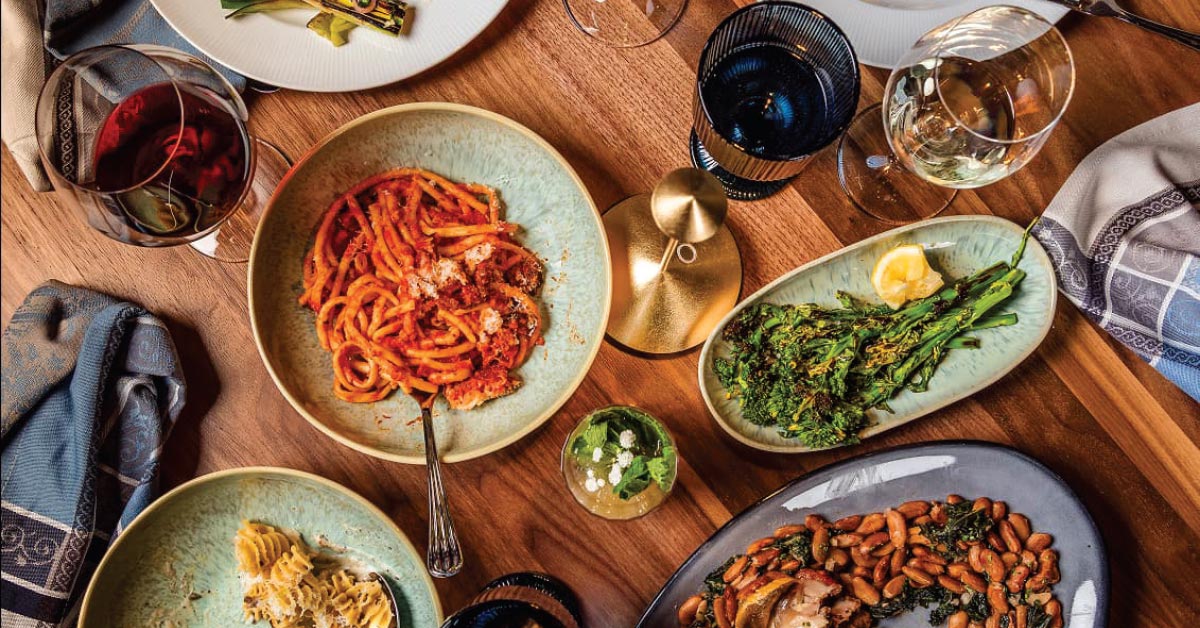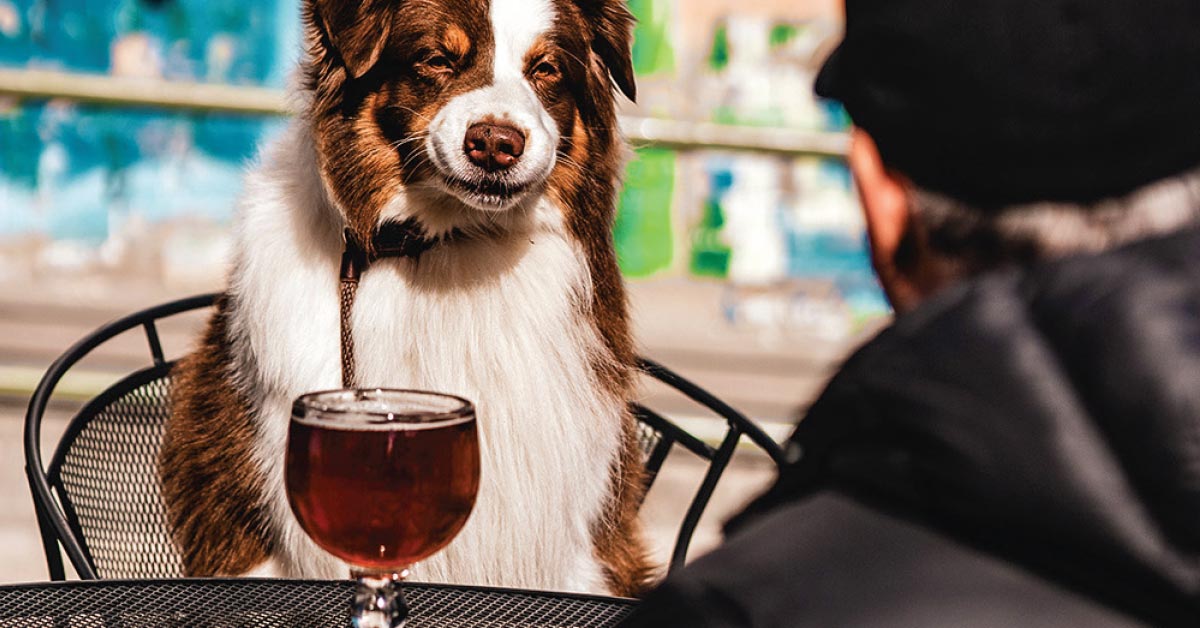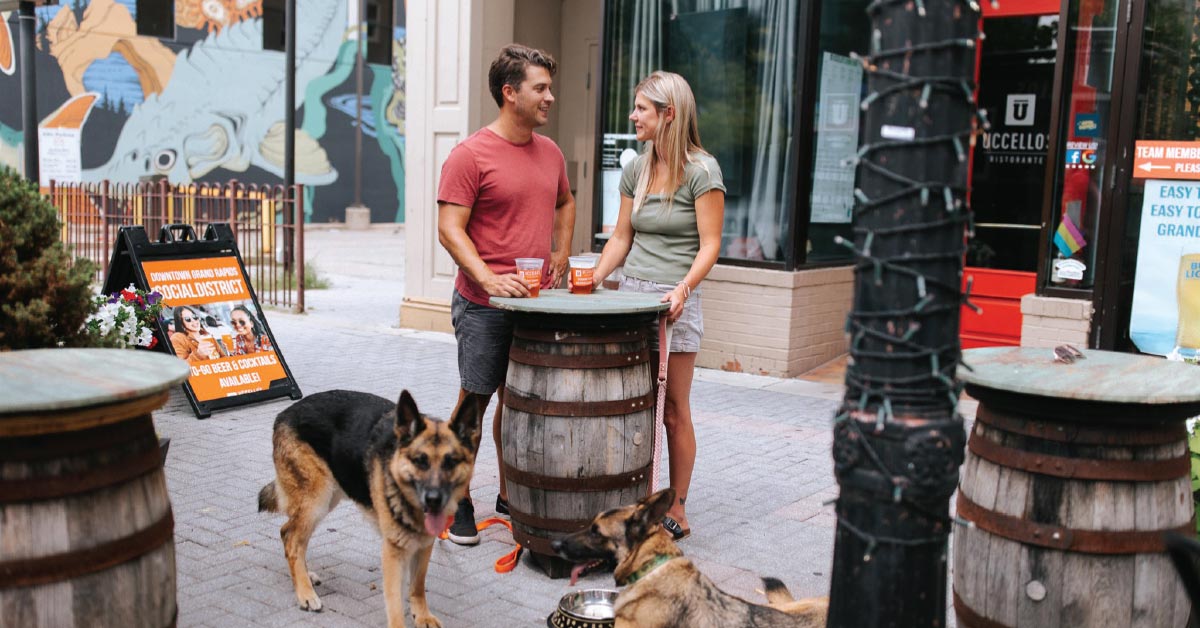Bubbly new style showcases hops without the bitterness
With a newly created IPA variation, craft brewers are offering a novel way to showcase hops in a style that falls on the opposite end of the spectrum from the much-hyped New England IPAs.
While NEIPAs often feature a hazy OJ appearance and a juice-like sweetness, Brut IPAs pour very pale, effervescent and uber dry.
Their construction also lets more of the hop aromatics stand out compared to NEIPA, said Jason Spaulding, co-founder of Brewery Vivant.
The Grand Rapids farmhouse brewery is among the first in Michigan to brew and package a Brut IPA. Its Champion Brut clocks in at 7-percent ABV and features Amarillo and Citra hops. After a small pub-only release last month, the beer will hit store shelves in four-packs of 16-ounce cans starting in early September.
“Champion Brut is a further exploration of how hops react with different brewing methods,” Spaulding told Revue. “It’s super-dry and it shows off how the yeasts and the enzymes interplay with late-addition hopping.”
Tasted back to back with Brewery Vivant’s Dawn of Vim NEIPA, Champion Brut lacked the syrupy mouthfeel and sweetness, but exuded seemingly more tropical hop aromas, which carried over into its flavors. While slightly thinner, Champion also seemed easier on the palate. And just like with champagne, Champion Brut’s effervescence offers a very refreshing drinking experience.
More bubbly? Yes, please!
Spaulding credits the NEIPA style for breaking down some of the stereotypes surrounding hoppy beers, which for so long embraced aggressive piney bitterness as a virtue. NEIPA proved hoppy beers could be approachable — if not desirable — when they’re more palate-friendly.
“Hazy Northeast IPAs brought more people into craft beer; they redefined what an IPA is,” Spaulding said. “With Brut IPAs, we can hit people that still love hops, but who maybe don’t approve of the hazy appearance and the sweetness.”
In some ways, the Brut IPA is the ying to the NEIPA yang, and their differences come down to brewing science.
NEIPAs are loaded with oats and other grains in the malt bill to create their silky mouthfeel, which is a remnant of the fermentation process. The brewer’s yeast fails to consume all those sugars and convert them into alcohol. As a result, the remaining sugars help beef up the mouthfeel in a NEIPA, contribute to their haze — along with copious amounts of dry-hopping — and help explain why they’re often sweet juice bombs.
On the other hand, Brut IPAs feature a light or neutral grain bill — often with adjuncts like rice, as is the case with Champion Brut — to achieve their pale color. To create the signature dryness, brewers add a common brewing enzyme to help break down as much as possible of the sugar that remains after the primary fermentation stage, allowing the yeast to consume it. (Champion Brut has zero residual sugar, although other breweries label beers as Brut IPAs when they have up to 1 percent of the sugar remaining.)
Like NEIPAs, Brut IPAs are aggressively dry-hopped to produce hop aromatics and avoid bitterness. But because of their use of neutral grains and their thin mouthfeel, Brut IPAs serve first and foremost to showcase hop characteristics.
According to Spaulding at Brewery Vivant, the new style also offers another example of the blurring of lines between beer and wine, and allows brewers and drinkers new ways to explore hops.
“The way these worlds interact is fun,” he said, noting the brewers challenged themselves with Champion Brut to produce a beer that had no residual sugar. “And it’s fun to see what stands out with different hops.”
The version of Champion Brut that will hit stores this month is the second batch Brewery Vivant has produced, Spaulding said, adding that each iteration will allow for new experimentation, befitting the brewery’s farmhouse tradition.
“We first brewed this on our pilot system and then scaled it up for this release, and I’m sure we’ll continue to tweak it a little bit more,” he said. “We always lead with innovation. Beers like this fit for a brewery of our size. Because we do like to experiment, it just keeps it fun … and people want to try new stuff. We can do whatever we want in that farmhouse tradition, and still
be true to ourselves.”





